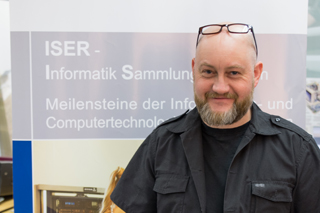Storing and processing data has a long history. From the Middle Ages to this day, people have turned to computing aids to help them solve problems. The Computer Technology Collection Erlangen charts the development of data processing technology, from tally sticks and Zuse machines to the integrated circuit.
ISER director Dr. Guido Nockemann takes us through his treasures, offering a brief anecdote about each exhibit.
Dr. Rainer Ulrich from Fraunhofer IIS comments with his experiences.

